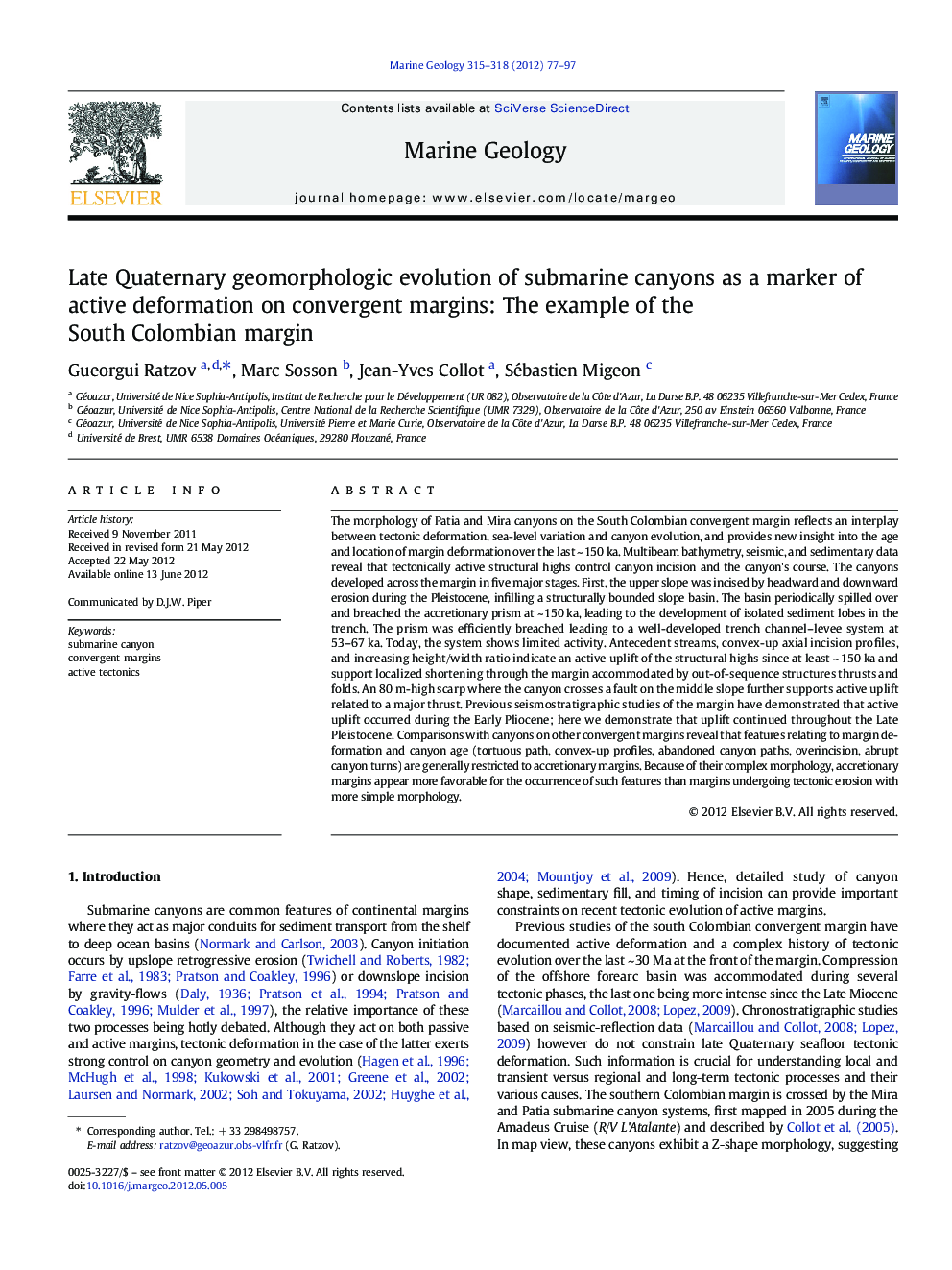| کد مقاله | کد نشریه | سال انتشار | مقاله انگلیسی | نسخه تمام متن |
|---|---|---|---|---|
| 4718580 | 1639123 | 2012 | 21 صفحه PDF | دانلود رایگان |

The morphology of Patia and Mira canyons on the South Colombian convergent margin reflects an interplay between tectonic deformation, sea-level variation and canyon evolution, and provides new insight into the age and location of margin deformation over the last ~ 150 ka. Multibeam bathymetry, seismic, and sedimentary data reveal that tectonically active structural highs control canyon incision and the canyon's course. The canyons developed across the margin in five major stages. First, the upper slope was incised by headward and downward erosion during the Pleistocene, infilling a structurally bounded slope basin. The basin periodically spilled over and breached the accretionary prism at ~ 150 ka, leading to the development of isolated sediment lobes in the trench. The prism was efficiently breached leading to a well-developed trench channel–levee system at 53–67 ka. Today, the system shows limited activity. Antecedent streams, convex-up axial incision profiles, and increasing height/width ratio indicate an active uplift of the structural highs since at least ~ 150 ka and support localized shortening through the margin accommodated by out-of-sequence structures thrusts and folds. An 80 m-high scarp where the canyon crosses a fault on the middle slope further supports active uplift related to a major thrust. Previous seismostratigraphic studies of the margin have demonstrated that active uplift occurred during the Early Pliocene; here we demonstrate that uplift continued throughout the Late Pleistocene. Comparisons with canyons on other convergent margins reveal that features relating to margin deformation and canyon age (tortuous path, convex-up profiles, abandoned canyon paths, overincision, abrupt canyon turns) are generally restricted to accretionary margins. Because of their complex morphology, accretionary margins appear more favorable for the occurrence of such features than margins undergoing tectonic erosion with more simple morphology.
► We establish the presence of structural highs uplifted before canyon inception.
► We then document vertical motions that occurred since canyons inception and date them.
► Uplift of the structural highs is active since at least ~ 150 kyr.
► Shortening is distributed throughout the margin, related to out-of-sequence structures.
► Geomorphic features constraining uplift are mainly observed on accretionary margins.
Journal: Marine Geology - Volumes 315–318, 15 June 2012, Pages 77–97